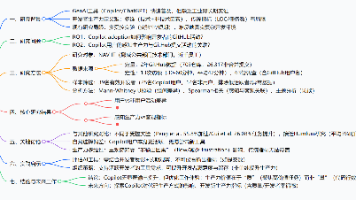带max的数学期望
带 max 的数学期望求法
问题描述
设总体 X∼U[0, θ]X\sim U[0,\,\theta]X∼U[0,θ] , 其中 θ>0\theta >0θ>0 , X1, X2,⋯ ,XnX_1,\,X_2,\cdots,X_nX1,X2,⋯,Xn 为其样本,
(1) 求 θ\thetaθ 的矩估计量 θ1^\hat{\theta_1}θ1^ 和最大似然估计量 θ2^\hat{\theta_2}θ2^
(2) 求 E(θ1^)E(\hat{\theta_1})E(θ1^) 和 E(θ2^)E(\hat{\theta_2})E(θ2^)
题解

解析
关于 Fθ2^(x)=[F(x)]nF_{\hat{\theta_2}}(x)=[F(x)]^nFθ2^(x)=[F(x)]n 怎么得来 ?
首先 , Fθ2^(x)=P{θ2^≤x}=P{max{X1,X2,⋯ ,Xn}≤x}=λF_{\hat{\theta_2}}(x)=P\{\hat{\theta_2}\leq x\}=P\{max\{X_1,X_2,\cdots,X_n\}\leq x\} = \lambdaFθ2^(x)=P{θ2^≤x}=P{max{X1,X2,⋯,Xn}≤x}=λ
∵\because∵ 最大值比 xxx 小 , 所以所有 XiX_iXi 都比 xxx 小, 又因为 XiX_iXi 之间相互独立,
∴\therefore∴ λ=P{X1<=x}×P{X2<=x}×⋯×P{Xn<=x}=[F(x)]n\lambda = P\{ X_1<=x \}\times P\{ X_2<=x \}\times\cdots \times P\{ X_n<=x \}=[F(x)]^nλ=P{X1<=x}×P{X2<=x}×⋯×P{Xn<=x}=[F(x)]n
更多推荐
 已为社区贡献2条内容
已为社区贡献2条内容









所有评论(0)